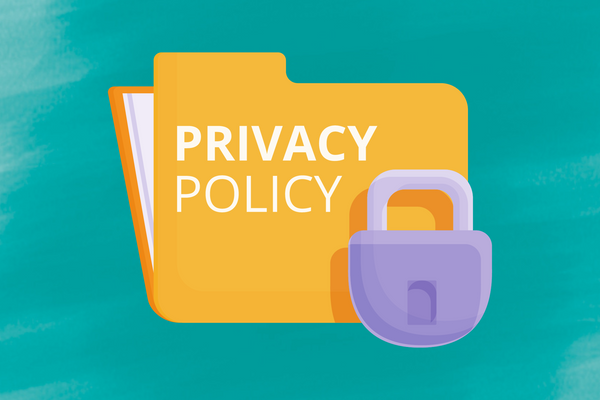
The General Data Protection Regulation (GDPR) is a pivotal piece of European legislation that continues to govern and shape how businesses manage their consumer data in 2025 and 2026.
If you are wondering why advanced GDPR data mapping is essential for staying in compliance and how to do GDPR data mapping the right, you have come to the right place. It’s now essential to know what data you possess and how it flows through your business.
In this article, you will learn about the GDPR and how it relates to data mapping.
Our mission here is to get your business to meet any needed data laws and regulations and keep you updated with the latest trends.
Key Takeaways
Data mapping is integral to complying with GDPR despite not being directly mentioned within the official documentation.
As of 2025, the emphasis on data protection under the GDPR has intensified, making data mapping more crucial than ever.
Successful data mapping for GDPR compliance involves several best practices that not only limit your risk exposure but streamline your operational speed and efficiency.
What is GDPR Data Mapping in 2025?

When considering data mapping in 2025, it’s essential to look at it from two primary perspectives: traditional data mapping within data management and the evolving landscape of geospatial data mapping. Here’s a breakdown:
Data Mapping in Data Management (Privacy and Compliance):
- Increased Automation:
- AI and machine learning will play a more significant role in automating data discovery and classification, streamlining the data mapping process.
- Tools will become more sophisticated in identifying sensitive data and mapping its flow across complex systems.
- Emphasis on Data Lineage:
- Regulatory requirements like the CPRA and similar global laws will drive a greater need for detailed data lineage.
- Organizations will need to demonstrate how data is transformed and used, not just where it resides.
- Real-Time Data Mapping:
- With the rise of real-time data processing, data mapping will need to adapt to track data flows in real-time.
- This will be crucial for compliance and for responding to data breaches.
- Integration with Data Governance:
- Data mapping will become more tightly integrated with data governance frameworks.
- Organizations will use data maps to enforce data policies and ensure data quality.
Geospatial Data Mapping:
- AI-Powered Mapmaking:
- Artificial intelligence will revolutionize mapmaking, enabling faster and more accurate creation of digital maps.
- AI will be used to process vast amounts of data from various sources, including satellite imagery and sensor data.
- 3D Mapping and Digital Twins:
- The demand for 3D models and digital twins will continue to grow, driving advancements in 3D mapping technologies.
- Lidar and photogrammetry will play a crucial role in creating highly detailed 3D representations of the real world.
- Real-Time and Dynamic Mapping:
- Mapping will become more dynamic, with real-time updates based on sensor data and other sources.
- This will be essential for applications like autonomous driving and smart city management.
- Increased Focus on Interoperability:
- Efforts will increase to ensure interoperability between different mapping systems and data sources.
- This will enable seamless integration of geospatial data into various applications.
- Enhanced Data Security:
- Due to the increased use of geospatial data, there will be a larger focus on data security. Protecting the integrity and confidentiality of mapping data will be very important.
In both areas, the trend is toward greater automation, real-time capabilities, and integration with other data management and technology systems.
Under the GDPR, most businesses must maintain documentation of their processing activities, encompassing aspects like processing purposes, data sharing, and retention. There are currently a few new proposed laws for GDPR in the making.
GDPR mandates that businesses adhere to specific obligations, including maintaining Records of Processing Activities (RoPA), responding to Data Subject Access Requests (DSAR), and conducting Data Protection Impact Assessments (DPIA). Effective corporate compliance with these requirements is unachievable without implementing data mapping.
GDPR Article 30 requires your business to keep a detailed record of any consumer data you process. With data mapping techniques, you can ensure your business keeps a full inventory of updated information. Through the data mapping lifecycle, you can also safely remove and keep track of any irregularities within your data repositories.
What is Data Mapping, and Why Does it Matter?
Data mapping helps your business analyze and keep track of internal data and see how it correlates with other data sets to then draw insight to guide your strategic decision-making.
When you properly implement data mapping, you ensure there are no dark sectors of data and recognize any attack or risk vector where one set of data intertwines with another.
When you fully account for such data within your business’s repositories, it’s much easier to track and see who is accessing it, for what purpose, and how the flow of said data is going through your departments.
What GDPR Changes Can Businesses Expect in 2025?
In 2023, the European Commission proposed new legislation aimed at strengthening the enforcement of the GDPR in cross-border scenarios. This law is designed to improve coordination among Data Protection Authorities (DPAs) across different Member States.
Specifically, it establishes clear procedural guidelines for DPAs when handling GDPR cases that affect individuals in multiple Member States.
A key feature of this proposal is the requirement for the lead Data Protection Authority to provide a summary of key issues to involved counterparts, thereby facilitating early input and consensus-building among authorities from the early stages of the process.
What this means is that there is a push for cross-border investigations to become faster and more streamlined, ensuring that any businesses and data subjects have their cases sorted out. Having proper data mapping can ensure that such disputes are handled quickly, as any needed information can quickly be accessed and verified within your business database.
Having a rigorous data compliance framework can also help your business handle incoming consumer subject rights requests more efficiently when dealing with EU-based consumer data.
Not sure where to start with GDPR data mapping? We get it! That’s why we offer a free consultation so you can see where you stand and what you need to do.
Why is GDPR Data Mapping is Important for Your Business?

One of the critical reasons why laws like the GDPR keep evolving is because we see an upsurge in new industry-shaping technologies emerge at incredibly rapid time intervals.
Just over the last couple of years, we have already seen the proliferation of Machine Learning and AI-language models scanning vast data online to learn and adapt.
Furthermore, as Artificial Intelligence seeps into the sphere of marketing, new regulations will be put in place to govern how AI can parse and handle consumer data to offer them better-tailored ads.
Typically, legislation lags behind in understanding emerging technologies in WEB 3.0, such as encrypted digital or virtual currencies and the Internet of Things.
Moving on, lawmakers are increasingly more vigilant and recognize the need to rapidly adapt to prevent data mishandling and data incidents related to new emerging technologies.
It can be daunting to attempt to tackle and fulfill all the regulatory requirements without help. In this case, businesses can opt to outsource compliance instead to stay ahead of the legal curve.
Data Mapping as a Pillar of Compliance
Data mapping underpins GDPR compliance in many ways. When we think about what purpose data mapping fulfills, we come to realize It’s not just a tool for inventorying data; it’s a strategic process that aligns data management practices with GDPR’s requirements.
David Manek, a senior managing director at Ankura says:
“A data map forms the foundation of a well-functioning data privacy compliance program. The data map tells us what personal data the organization is collecting, what they are doing with the data when it’s in their environment, how they are protecting such data, and where such data is transferred. The output from the data map is utilized for most downstream compliance requirements. For example, we’ll use the data map to accurately update privacy notices and to determine which systems need to be effectuated when responding to privacy rights requests, including the right of access or erasure. Our outside counsel partners may use the data map to analyze cross-border data flows when drafting the appropriate data transfer safeguards.”
Through mapping, businesses can ensure that data compliance solutions and handling processes, from collection to deletion, adhere to GDPR guidelines.
Here are some additional ways data mapping intertwines with GDPR:
Identifying Personal Data: It’s paramount to locate and identify all personal data that an organization processes – a pre-requirement without which compliance can’t be achieved. This also involves using data discovery scanning to illuminate dark sectors of data within your business.
Clarity in Data Processing Activity: Data mapping provides a clear overview of how data is processed, from collection to deletion, ensuring compliance with GDPR principles like data minimization and purpose limitation.
Risk Management: It assists in identifying and mitigating risks related to data processing activity, which is crucial for GDPR’s requirement to implement appropriate security measures.
Fulfilling Data Subject Rights: GDPR grants individuals rights over their data. Data mapping facilitates the fulfillment of these rights, like access, rectification, and erasure requests, by knowing where and how data is stored.
Documentation and Accountability: GDPR requires organizations to demonstrate their compliance. Data mapping acts as a key piece of documentation, evidencing an organization’s data processing activities and compliance efforts.
As we can see, although data mapping is not mentioned within the official GDPR documentation, its meaning and purpose are intertwined in almost every aspect of such data privacy regulations.
Benefits of GDPR Data Mapping
Having a sound data mapping strategy can boost your business operation speeds, reduce inter-department latency of handling data, and facilitate compliant business conduct with third-party vendors using your consumer data.
Every single point where data is interfaced with must have a state purpose and be limited in terms of access rights to mitigate mishandling or theft. Let’s briefly explore some of the key benefits of Data Mapping in the context of the GDPR:
Enhance Data Accountability: Effective data mapping increases accountability by providing a clear trail of data transactions within your specific business, be it in the healthcare, B2B, or retail sectors. This ensures that every piece of personal information can be accounted for and its purpose and use explained, thus upholding transparency.
Streamline Your Data Management: Data mapping exists to make it easier for your business to simplify the management of personal information. It provides a structured approach to data handling, making it easier to identify and rectify inefficiencies and redundancies in internal data flows.
Efficient Incident Response: In the increasingly more common event of a data breach or other incidents, having a detailed map of data flows enables quicker and more targeted responses. Organizations can easily identify affected data, assess the impact, and take appropriate remedial actions.
Another benefit of GDPR comes in the form of risk prevention and reducing the chance of incredibly high monetary fines for noncompliance.
By ensuring that data processing activities are GDPR compliant, data mapping significantly reduces the risk of legal repercussions and financial penalties that can arise due to a data breach, for example. Data and cybersecurity threats are not just exclusive to large corporations but also affect SMEs as well.
The average cost of a data breach a few years ago in 2023 was estimated at around 4.5 million USD, according to a report by IBM now that number is exponentially higher. As you clearly see, infringements of regulations like the GDPR can result not only in monetary loss from the data itself but also in substantial fines and even reputational damage. Well-implemented compliance services that focus on a safe data mapping strategy act as a safeguard against such costly violations.
Captain Compliance: Your GDPR Data Mapping Partner

At Captain Compliance, we specialize in consulting businesses via our deep expertise in the field of data compliance, GDPR, and data mapping practices. First, your business must understand what scope of data falls under certain regulations, and then steps must be taken to govern said data.
This procedure is not a one-time ready-and-done action but rather a continuous process, as your business’s compliance in 2023 might not be sufficient going forward in 2024 and beyond. With the increase in hackers due to AI-assisted programming and social engineering, it’s not just about complying with the GDPR but also proactively dealing with current threats.
Our Services Tailored for GDPR Data Mapping in 2025
Here is an overview of the compliance solutions we currently offer regarding GDPR and Data Mapping:
Data Inventory and Mapping: We offer thorough services in identifying and mapping data flows, ensuring all personal data is accounted for in compliance with GDPR.
Data Protection Impact Assessments (DPIAs): We can help your business conduct DPIAs to evaluate data processing risks and collaborate together to help you establish mitigation strategies.
Compliance Audits and Monitoring: These services include conducting audits and continuous monitoring to ensure ongoing compliance with GDPR standards and adapting to any regulatory changes within your business.
Getting GDPR Data Mapping Right
Here comes the best part: now that you know about the importance of data mapping in the scope of GDPR compliance, it’s time to learn some of the best practices to help your business out.
Step-by-Step Guide to GDPR Data Mapping
Data mapping is not an abstract term where you derive creative insights from seemingly random data within your business. It’s a meticulous practice that has a starting point and an end goal that is tailored to your specific needs.
Let’s suppose, in this case, that you perform data mapping to have a better inventory of your internal Data Discovery Processes:
Begin by identifying all sources of sensitive information and personal data within the organization that you gather from consumers – here is also a good place where assessing purpose can begin.
Data classification is the second step, which aims to classify the data based on type, sensitivity, and GDPR relevance.
Data Flow Mapping helps you create a visual representation of how data moves through the organization –
Data visualization is a fine art form and can be used to break down complex data into a format easily readable for humans and stakeholders (assuming they are human in the first place).
Data Lifecycle Management: Understanding and documenting the lifecycle of data, from collection all the way up to deletion, is an inseparable part of data mapping.
Record Keeping: Maintain detailed records of all the above steps, which are essential for demonstrating GDPR compliance.
Remember that data discovery is not solely about helping your business stay legally compliant but also about helping you gain actionable insights into the market and better tailor your products and offerings.
Best Practices for Successful GDPR Data Mapping
Before your business begins the process of data mapping, there are a few key best practice outlines for the process of mapping to ensure alignment with GDPR compliance goals:
Clearly Define Mapping Requirements: It’s crucial to clearly define the objectives, requirements, and scope of your data mapping project. This involves understanding the data entities, fields, relationships, and any needs for data transformation or data integration.
Data Profiling and Cleansing: Before mapping, thoroughly profile and cleanse the data. Identify and address any data quality issues, redundancies, or inconsistencies that could impact the mapping process and the subsequent analysis. Clean and standardized datasets are fundamental for accurate mapping and maintaining data integrity, both of which are core to GDPR compliance.
Maintain Documentation: Document the mapping rules, transformations, and decisions made during the process. This documentation acts as a reference for future updates, troubleshooting, and tracking data lineage, ensuring the process is transparent and repeatable.
Validate and Test Mappings: After mapping, validate and test the data to ensure accuracy, completeness, and adherence to mapping rules. This involves comparing source and target data to verify successful transformation and data integration, helping identify any discrepancies or errors early, which can prevent potential compliance issues.
Monitor and Update: Regularly monitor the mapped data for changes in the source or target databases. As data evolves, it’s important to keep the mappings up to date to maintain data integrity and accuracy; you don’t want your business to fall victim to ransomware because your staff were using 20-year-old Windows copies.
These are good starting points to consider when building a solution for data mapping that stands the test of time. The more solid foundation you lay at the start, the easier the maintenance and upkeep will be.
And the initial investment cost for proactive data incident prevention far outweighs the potential risk.
Frequently Asked Questions (FAQs)
What is Data Mapping in GDPR?
GDPR Data Mapping involves documenting how a business collects, stores, and uses data, providing a clear view of data flow and risk mitigation. It acts as a roadmap of data throughout an organization, which is crucial for managing data privacy risks.
Does GDPR require data mapping?
While not explicitly required by GDPR, data mapping is fundamental for complying with its legal requirements, such as maintaining records of processing activities and managing data breaches effectively.
Why is data mapping important in GDPR?
Data mapping is vital in GDPR compliance for maintaining processing records and facilitating Data Protection Impact Assessments, ensuring the protection of personal data as per regulatory standards.
Is data mapping a legal requirement?
Data mapping is not directly mandated by GDPR, but it is essential for supporting and enabling compliance with various GDPR articles and tasks related to data privacy. Some of the top firms for
How Can Captain Compliance Help You?
At Captain Compliance, our mission is to help your business align with any required data regulations so you can focus on the other aspects whilst having peace of mind.
You might wonder what comes next in your path toward mitigating data risks from both regulatory entities, class action lawsuits, and data theft? Well, we’re here for you.